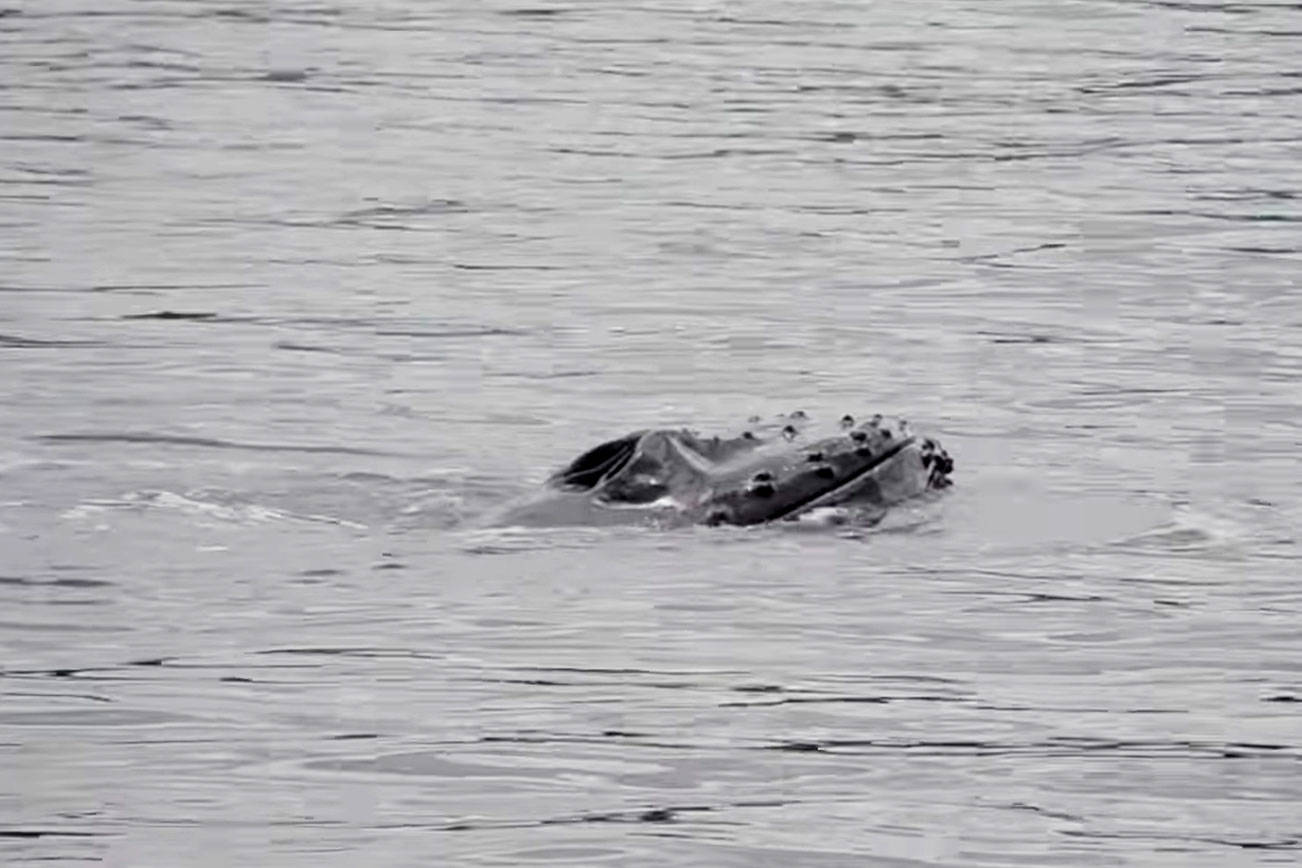Biologists and volunteers were closely watching coastal waters Tuesday, a day after a Washington state ferry reportedly hit and possibly killed a humpback whale during the vessel’s run between Clinton and Mukilteo.
Photos, video and witness reports were being reviewed by the National Oceanic and Atmospheric Administration on Tuesday as officials “try to put together and understand what happened and to ascertain what the injuries are,” said Michael Milstein, an agency spokesman.
Washington State Ferries also is reviewing photos and videos of the incident.
Although the crew didn’t believe at the time that the ferry struck a whale, it is likely that is the case, said Ian Sterling, a spokesman for the state ferry system.
“Our guys as far as people in the wheelhouse didn’t believe they struck an animal,” Sterling said.
“They didn’t feel anything,” he said. “They didn’t see anything.”
Video posted on Facebook by the Pacific Whale Watch Association shows the whale taking a breath at the surface before vanishing. The video was taken by Ariel Yseth, who was a guest aboard the commercial whale-watch vessel Saratoga.
PWWA said the strike happened as the ferry Tokitae, which was named to honor a famous orca, was approaching the Mukilteo terminal at 13 knots, about three-quarters of a mile from the slip.
The Saratoga contacted the ferry as it approached a pair of humpbacks in the ferry lane, but the ferry did not slow or alter its course, the Pacific Whale Watch Association said.
One whale surfaced 10 feet in front of the ferry. “Following the collision, the wounded whale was seen struggling at the surface for nearly 20 minutes while its companion whale stayed close by the dying whale,” the Whale Watch Association said on Facebook.
The Saratoga alerted other passing vessels about the wounded whale.
Milstein from NOAA said Tuesday evening that the two whales were originally documented as having come from British Columbia. One was an adult and the other a juvenile. The juvenile was the one that was struck, he said.
The pair had been seen together on Saturday and Sunday. When the larger whale was spotted around 5:45 p.m. Monday off Whidbey Island’s north bluff, it was alone, Milstein said.
Sterling said ferry crews take whale sitings seriously and typically slow down when they receive reports of whales nearby. He compared the Monday incident to a deer running in front of a car on a highway.
“I think the general population thinks we can stop on a dime,” he said. “… It takes hundreds of feet, if not thousands, to stop.”
The 362-foot Tokitae made its maiden voyage in 2014 and can hold 1,500 passengers and 144 vehicles. It weighs 4,320 long tons. A long ton is about 12 percent more than a 2,000-pound short ton.
Humpbacks often reach 50 feet in length — about as long as a school bus — and weigh about 40 tons.
Collisions between ferries and whales have been rare, Sterling said. There was one in Elliott Bay in May 2019 on the Seattle-to-Bainbridge run, but no others were recorded during the previous half century or longer.
The humpback population in the region has been increasing in recent years, Milstein said.
The ferry Tokitae was named for an orca captured in Penn Covein 1970 and taken to an aquarium in Miami, where she was renamed “Lolita.”
n Eric Stevick can be reached at stevick@heraldnet.com. Ben Watanabe can be reached at bwattanabe@heraldnet.com



